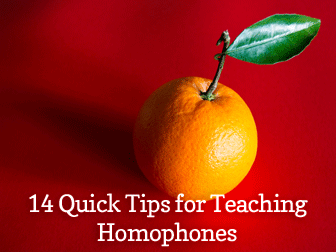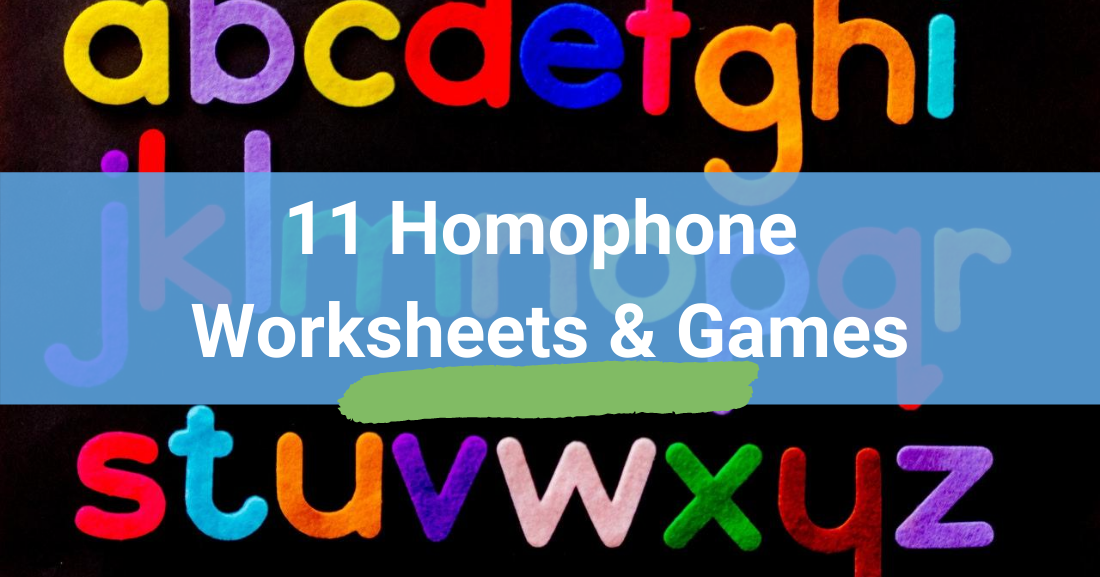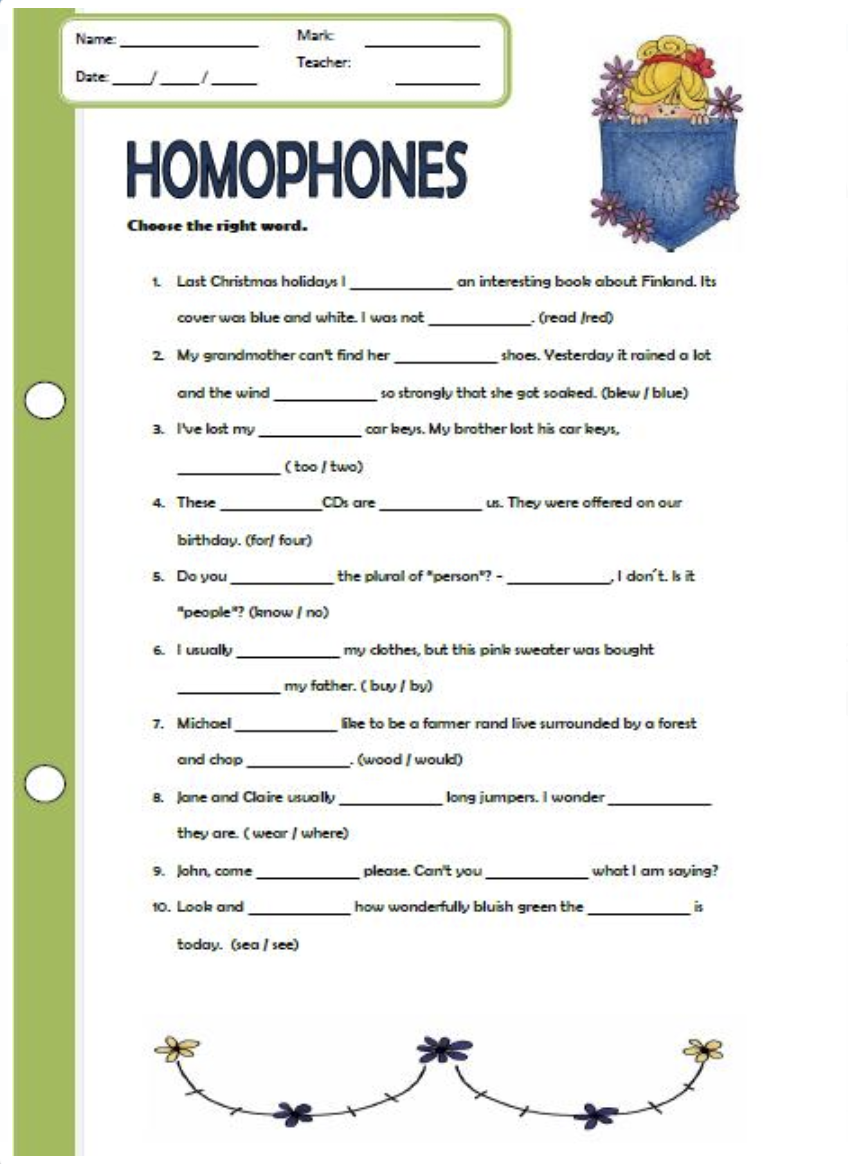14 Quick Tips for Teaching Homophones


Learning homophones is a skill that students will use their entire lives. Knowing the difference between there, their, and they’re is even a struggle for some adults, so instilling tips and tricks in your students to be able to differentiate these words will help not only help them with school assignments, but it will help them in countless real-world situations, from writing emails to creating a resume.

However, homophones can be down right confusing to students, no matter which level you’re teaching. Not to mention, there are homonyms to consider, too (words that are spelled the same but have different meanings). With so much to consider, how in the world we help students keep things straight?
To help you teach students about words that sound the same but are spelled differently - or “word buddies” as I like to call them - it’s important to give them plenty of homophones practice via worksheets, games, and speaking activities. The exercises below tackle common ones, such as:
When you’re ready, let’s dive in.
Using a game to introduce or practice a tricky topic is always a good idea if you’re teaching young learners. Many beginner students find word buddies to be confusing and even frustrating, so by allowing them to have an outlet to have fun in the midst of learning a challenging subject will make all the difference in how well they’re able to comprehend the words.
Homophones Domino - This educational game of dominos provides students with a fun, engaging exercise to practice identifying homophones. Students will pair up word buddies like scent/cent, for/four, and stair/stare.
Homophones Game - Cards with Pairs - Use this card game for a variety of activities with your students! Simply print out the grid with homophone pairs and cut them out into small squares. Partners can practice matching their sets together, or you can flip them upside down and take turns trying to match the pairs.
Homophones Memory Game - Similar to the set above, you can use this memory game to practice matching homophone pairs. Students take turns, choose two cards, flip them over to see if the match - you know how that goes. No matter how you use the set, I recommend having students say the homophones aloud so teachers can listen to their pronunciation and offer feedback.
Kindergarten is an excellent time to introduce simple, common homophones through basic worksheets and games. From tracing the words on paper to learning to identify which of their vocab terms have “word buddies,” it’s important to keep things light and simple. Homophones can take years to nail down. Worksheet with pictures or animations are always a great option to show young learners a visual representation of the difference between two words that sound the same.
Two, to or too - Homophones - This resource goes over the basic meanings of each homophone and how they differ from one another. It includes images, so students can quickly understand which spelling of “to” is the right one.

As students progress in their education, English teachers should consider using warmers and fillers as a way to keep their class refreshed on common homophones. The more often they practice differentiating the words, the more accuracy you will see in their writing, which is the goal, of course! The worksheets below range from 1st grade (beginner) to 6th grade (pre-intermediate) curriculum, but each activity can be adapted to fit your specific needs.
For elementary schoolers, fill in the blank exercises and speaking activities are great ways to offer a challenge to students and gage where their strengths are.
Homophones Worksheet - In this activity, students will be given two sentences with a pair of homophones. They will fill in the blanks with the appropriate words. Elementary teachers can use this as a refresher or as a way to teach new word buddies.
Homophones Cards - I love this activity because it’s a bit more hands on then some of the others on this list. Students will cut out homophones from a grid and paste them below their corresponding image. This exercise is also very easy to replicate with different homophone sets to change the difficulty.
Pronunciation Activity - Homophones - Homophones are often associated with reading and writing activities, but this worksheet focuses on pronunciation (brownie points from ESL teachers!). Students will read a paragraph out loud and identify the misplaced homophone, then determine what the correct spelling should be.
Homophones - This is a packet of activities about homophones. From fill in the blanks to a word search to a revision activity, upper elementary students will get plenty of practice with words that sound the same.
Pronouns and Homophones Worksheet - This worksheet is best-suited for upper-elementary students from 4th to 6th grade. They will read sentences with mistakes in them and identify with pronoun/homophone is wrong and then correct it in the blank.
Confusing Words - Part 1 - Homophones can be confusing, right? This worksheet not only focuses on words that sound the same but are spelled differently, but it also includes other commonly confused words, like verbs vs. adjectives and verbs vs. nouns.
Homophone activities are most often used in elementary classrooms, but we’ve found a more advanced worksheet that is an excellent refresher for high school students or experienced ESL students.
Homophones: Upper-Intermediate Error Correction Worksheet - Students will be asked to read a story about a detective and identify the incorrect homophones throughout the passage. They will need to substitute the wrong word for the correctly spelled homophone to complete the activity.
For more strategies on teaching commonly confused words, check out Top 10 Tongue Twisters: True Teacher's Treasure?